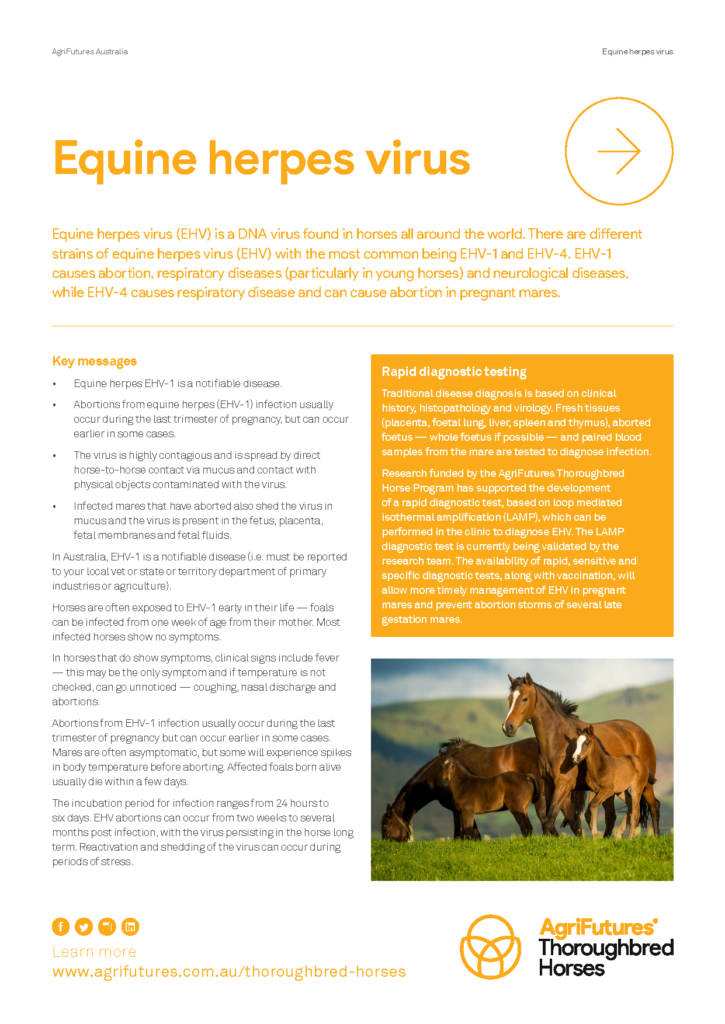Equine herpes virus (EHV) is a DNA virus found in horses all around the world. There are different strains of EHV, with the most common being EHV-1 and EHV-4. EHV-1 causes abortion, respiratory diseases (particularly in young horses) and neurological diseases, while EHV-4 causes respiratory disease and can cause abortion in pregnant mares.
In Australia, EHV-1 is a notifiable disease (i.e. must be reported to your local vet or state or territory department of primary industries or agriculture).
Horses are often exposed to EHV-1 early in their life — foals can be infected from one week of age from their mother. Most infected horses show no symptoms.
In horses that do show symptoms, clinical signs include fever — this may be the only symptom and if temperature is not checked, can go unnoticed — coughing, nasal discharge and abortions.
Abortions from EHV-1 infection usually occur during the last trimester of pregnancy but can occur earlier in some cases. Mares are often asymptomatic, but some will experience spikes in body temperature before aborting. Affected foals born alive usually die within a few days.
The incubation period for infection ranges from 24 hours to six days. EHV abortions can occur from two weeks to several months post infection, with the virus persisting in the horse long term. Reactivation and shedding of the virus can occur during periods of stress.
Strains of EHV do not affect people, but the disease is highly contagious and easily transmitted between horses on people’s hands and clothing, contaminated tack and equipment, horse transport vehicles or material from other horses (e.g. uterine fluids, mucus, placental material or fetuses).
Mares that have aborted shed the virus in mucus and the virus is present in the fetus, fetal membranes and fetal fluids. The virus also spreads by direct horse-to-horse contact via mucus for around 7–10 days after incubation.





